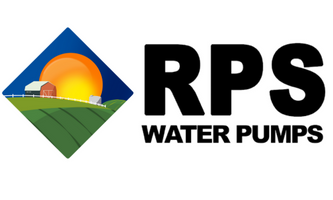

Answering Your Water Pump Questions
with RPS Engineer Mike

How is a well pump wired?
Electrical wiring is often the part of a submersible well pump install that folks feel least comfortable with. If you don’t have a lot of experience with electricity, it can feel dangerous to strip and crimp wires together, or to install pressure switches or starter boxes. Never fear, hopefully the following pages break down each component of our DIY kits wiring install into easily accessible pieces.
When you receive a submersible well pump from us, some key electrical steps will include:
- Checking the current breaker box fuse you plan to use as a power input to your pump. You’ll want to consult the following table to determine what an acceptable circuit breaker rating is in amps. If you’re upgrading to a larger HP well pump, you may need to swap out your circuit breaker.
Table 1: Circuit Breaker Rating by Pump HP
|
HP |
Volts |
Circuit Breaker Amps |
Standard Fuse Amps |
NM-B Wire Gauge Necessary |
|
½ HP |
110V |
15 |
15 |
14ga |
|
½ HP |
220V |
15 |
15 |
14ga |
|
¾ HP |
20 |
20 |
12ga |
|
|
1 HP |
25 |
25 |
10ga |
|
|
1 ½ HP |
30 |
30 |
10ga |
|
|
2 HP |
30 |
30 |
10ga |
|
|
3 HP |
45 |
40 |
8ga |
|
|
5 HP |
70 |
60 |
4ga |
Diagram 1: Wire Grounding

Diagram 2: Starter Box Wiring

5. If using a pressure switch, which is standard for household applications, you would want to wire it in between your breaker box and starter box. From your starter box, you would wire from L1 and L2 to the T1 and T2 terminals in the pressure switch (the two central terminals). From the breaker box, you would wire to the L1 and L2 present on the pressure switch.
Diagram 3 - Pressure Switch Wiring

6. If you’re not wiring from a breaker but rather to a generator, the wiring can go straight to the pressure switch or starter box L1 and L2. You will need to cap the neutral wire, which is opposite the ground wire (normally green), and use the other two hot wires. For wiring into a GFCI outlet, you can either hardwire from your NM-B wire or splice into a 220V NEMA power cord. We recommend hardwiring to prevent any tripping hazards.
If you still have questions about wiring, we’d love to chat more with you. Again, electricity can be scary, and rule number one is always to turn off any breakers you’ll be working with. Besides that, you’ll want a multimeter to troubleshoot voltages. Still nervous? Call us at (855)-560-5670 or email us at help@ruralpowersystems.com. We can walk you through each step of the process, both pre and post-sale. Since we don’t make commission, there’s no pressure to buy right away, we just go at your pace! We hope to hear from you soon!
Take the Next Step to Water Independence
Learn More About Water Pumps
-
 If you’re considering replacing a well pump and it’s your first time, you may have questions about long it may take. We often say a full install only has to be a couple of hours, but is that actually accurate?Read now
If you’re considering replacing a well pump and it’s your first time, you may have questions about long it may take. We often say a full install only has to be a couple of hours, but is that actually accurate?Read now -

How many GPM is a good well pump?
Water needs can differ significantly depending on circumstances, and you may need a submersible well pump with a significantly higher or lower flow rate, depending on household size, irrigation needs, and sprinkler use.Read now -

Can you put in too big of a pressure tank?
When it comes to sizing a well pressure tank, there really isn’t an upper limit as to how big of a tank you can put in. There are some pros and cons to different size pressure tanks, and they can have an impact on the lifespan of your pump.Read now




